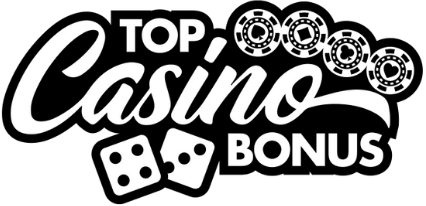Variance in gambling: coping with upswings and downswings
If you’ve spent any real time in gambling circles, be it at felt tables in dusty back rooms or chasing jackpots in high-def lobbies online, you’ve heard the word “variance” tossed around like dice in a craps pit. But let me tell you, most folks use it like they’re seasoning fried eggs, with no idea what it means or how it truly affects their bankroll. Variance isn’t just statistical mumbo jumbo. It’s the heart and guts of the entire gambling lifecycle, the reason hot streaks feel like divine favor and losing spells pinch like a vise.
Table of contents
Understanding real variance vs perceived luck
Beginners? They often confuse luck with variance. They think winning five hands in a row means they’re on a heater. Pros know it’s just a natural deviation. Variance measures how far results swing from the expected average, and in gambling, those swings can stretch longer than a desert road in July.
Expected value doesn’t tell the whole story
In any game with a defined edge, blackjack, poker, or even roulette, your long-term results drift toward what’s called Expected Value (EV). But day-to-day? You can be miles off. That’s variance at play. A solid +5% EV strategy can still suffer a 200-hand losing streak. Ask any grinder, they’ve lived it, or quit before seeing the other end.
Mastering emotional discipline during swings
Most gamblers lose money not because they pick bad games, but because they can’t stomach the ride. They overbet when riding an upswing and panic when the tide turns. Emotional discipline separates sharps from the busted-out amateurs drying by the pit exit.
Don’t chase dragons during upswings
Here’s where even seasoned players fall off. Win a few grand over a weekend, and suddenly they think they’re invincible. I’ve seen guys triple their stakes at BetMGM, bragging on Discord about crushing slots then vanishing when their luck turns. Upswings trick you into believing you’re better than you are. Maintain your edge or variance will humble you soon enough.
Hold fast in the trenches of a downswing
Downswings are where most bankrolls die. The dead giveaway? Changing tactics mid-stream. Chasing losses, doubling bets, abandoning +EV strategies, these wrecks all start when folks stop trusting the math. I once had a 9-week stretch where I went 2-for-18 in live poker tournaments. It rattled me. But sticking to disciplined plays eventually turned the tide. You don’t adapt by emotion; you adapt through data-informed analysis.
The role of bankroll management in mitigating variance
If variance is the storm, bankroll management is your shelter. And no, I’m not talking about putting $100 in an account and calling it your “roll.” I mean true, ratio-based, tiered management designed for the long term. Know your risk thresholds or prepare to be eaten alive.
Advanced techniques for serious grinders
Most blogs will toss out the 5% rule: never bet more than 5% of your bankroll. Cute. Old-school. But if you’re serious, if you’re grinding high-volatility games or multi-table poker, you need tighter controls. Progressive loss limits, allocation by game type, inverse risk modeling, this is where advanced bankroll management truly shines.
Game selection: not all volatility is created equal
Every game carries its own volatility profile. Slots? High variance. Blackjack and baccarat? Lower variance if played optimally. Yet folks consistently choose poorly for their risk tolerance, playing volatile games with shallow bankrolls like jumping off a cliff hoping for a trampoline.
Matching game type to your bankroll
If you’ve only got a few hundred bucks and play max bet on slot machines at 888casino, you’re not a player, you’re a hobbyist lighting money on fire. Compare that with a guy betting fractionally in multi-hand video poker or playing perfect basic strategy at Bet365 Casino. He can endure a variance swing and keep swinging long enough to realize his edge.
Using data and tracking to survive and thrive
Old-timers used notebooks; today, it’s spreadsheets or apps. Doesn’t matter the tool, what matters is tracking enough to diagnose where variance ends and mistakes begin. I track hands, sessions, stakes, tilt levels, and even sleep hours. Sounds obsessive? Maybe. But that granularity saves bankrolls.
Spotting patterns behind the noise
Over 500 sessions of roulette at Bally Casino, I noticed one wheel always hesitated a half-second longer before spins, led to subtle bias experiments. That edge didn’t show up until over 300 tracked spins. Pattern survival depends on recordkeeping. Don’t trust your memory; trust your metrics.
Psychological shifts necessary for long-term success
Most people walk into gambling believing results ought to balance out fast. That thinking breaks you. Variance doesn’t care about fairness, timing, or feelings. It’s cold, statistical gravity. A decade is the scale on which it steadies. Anything less is weather, not climate.
Developing the thick skin of a grinder
Think of variance like ocean tides. You can predict averages, design levees, but you can’t outmuscle it. Ride it with strategy, not react to each wave. Build a mindset where you let the numbers work, not your gut. Confidence rooted in methodology is the only antidote to turbulence.
Wisdom from walking through fire
Surviving variance, truly surviving it, not just flirting with fortune, requires a fusion of technical execution and raw plastered grit. Most gamblers crumble because they expect smooth roads. But it’s the rocky paths that test if your system has bones.
Gambling’s not just math. It’s weathering storms inside your head while navigating the probabilities outside. If you want to get to the other side, to play in EV territory long enough to see returns, build a system so tight it breathes on its own. No winging it. No guessing. Just you, your data, and your discipline. If luck visits? Great. But don’t depend on it. Let it be the spice, not the meal.





0 Comments